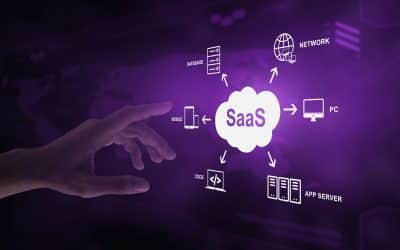Starting the journey of establishing the Customer Relationship Management (CRM) development process can transform businesses looking to improve relationships with customers. This step-by-step guide was created specifically for beginners and includes comprehensive guidelines on how to develop CRM. CRM is more than software. It’s a reliable method of monitoring interactions and relationships between customers’ accounts.
This short introduction to CRM will examine its fundamental aspects, highlight its importance in the modern workplace, and provide any possible benefits it can bring to people embarking on this exciting project.
Are You New to CRM Design or Looking to Revamp Current Processes? If so, this guide could be a great resource to simplify the complex process into manageable steps while providing the tools to maximize every benefit of developing CRM-related software to boost customer satisfaction and maintain growth.
Understanding CRM Basics
Understanding the basics essential to Customer Relation Management (CRM) is vital in developing effective business management. CRM is a method that combines technology to manage interactions between the company’s existing customers and the ones who might be on the way. It encompasses a range of functions, including but not limited to marketing, sales, or customer service. They all aim to create long-lasting relationships and improve customer satisfaction.
One of CRM’s primary tenets in its natural management of data is that all the information regarding the customers’ preferences is compiled into an integrated database. This allows businesses to gain extensive knowledge of their client’s behaviour, allowing specific marketing and communications. CRM systems also permit the automation of repetitive tasks by reducing the number of processes and freeing time to concentrate on more strategic activities. Understanding the customer’s journey, preferences, and challenges is crucial to developing the products or services to satisfy their requirements efficiently.
Furthermore, CRM plays an essential function in managing pipelines for sales, helping businesses keep track of leads and opportunities, and evaluating sales’ effectiveness. As more companies acknowledge the importance of focusing on customer requirements, understanding the basics of CRM is crucial. Starting with lead creation to customer retention, CRM provides a complete framework to enhance customer experience, improve efficiency in operations, and ultimately assist in sustainable growth for companies. A knowledge of CRM basics can be the foundation of any business that wants to succeed in the present competitive and fast-paced market.
Defining Your CRM Goals
Determining a strategic and explicit purpose is the first step to successfully developing and implementing CRM software. The CRM system is Relationship Management (CRM) software. These are the fundamental concepts that connect the CRM system to the company’s overall objectives. Businesses must define specific, quantifiable, achievable, practical, and time-bound (SMART) goals that reflect their requirements and desires. These goals could cover various aspects, such as improving customer satisfaction, increasing sales profits, boosting lead conversion rates, and optimizing internal procedures.
Understanding the objectives will enable businesses to tailor the CRM system to meet the goals by selecting the features or functions in the context of their overall goals. Additionally, clearly defined objectives for the CRM system can serve as a way to measure the efficiency and effectiveness of the system, allowing companies to evaluate the progress they have made and make adjustments as needed. If you’re trying to increase customer satisfaction, increase marketing efforts, or improve the customer service process, setting clear goals will ensure that your CRM software is a benefit for strategic reasons, not just a tool for technology.
As companies grow and evolve and evolve, so do the objectives of their CRM. They also require periodic reviews and adjustments to ensure that they’re up to date with the evolving features of the business environment. Defining the goals of CRM is not only a step in the beginning; it is a continuous commitment to ensure that your CRM program remains a successful tool for the sustainable growth of your businesses and the building of lasting relationships with your customers.
Identifying Target Users and Stakeholders
Finding the ideal target audience and stakeholder groups is crucial in creating the most effective customer relationship management (CRM) method. A user-centric design and stakeholder involvement are essential to ensure that this CRM software matches users’ various needs and expectations using the system. People who will be targeted include sales professionals, marketing teams, managers, and customer service representatives at different levels within the organization.
Understanding their distinct obligations, roles, and concerns will allow the developers to tailor their CRM systems to enhance the effectiveness and efficiency of their systems. Additionally, engaging and acknowledging with the different stakeholders, such as the IT specialists of the executive and users. It is vital to gain their support, gather important information, and secure the required resources to ensure a successful implementation. Collaboration with stakeholders helps create an environment of cooperation that aligns the CRM program with objectives and strategies for the organization.
Additionally, considering various departments’ views and roles will ensure that the CRM software can meet every requirement that ensures widespread acceptance. This method is inclusive and will improve the user experience and assist in the overall efficiency and long-term viability of implementing a custom CRM. Recognition and active participation of the targeted audience and other stakeholders can help develop a CRM system that not only fulfils technical requirements but also provides a connection with the end-users and aids in the achievement of the business’s goals.
Selecting the Right CRM Platform
The choice of the proper customer relationship management (CRM) system is an important decision that can greatly affect the efficacy of a CRM development plan. There are numerous CRM choices, each with distinct features, functions, and capacities. The process begins by conducting an exhaustive study of the needs of the business, the workflows currently used today, and plans for expansion in the near future. The most important considerations are the platform’s flexibility, the capability to connect it with existing systems, and the alignment with the industry’s specific needs.
Assessing the user’s experience and the speed at which learning happens is crucial to ensure that all departments within the organization utilize the system. Scalability is a crucial aspect when selecting a CRM system. It must be able to grow and change to meet the evolving demands of the company. There is a choice between cloud-based, on-premises, or hybrid solutions, each offering advantages and disadvantages. Also, looking into the reliability of the company and its support services and security measures is essential to limit the chance of risks. A comprehensive cost-benefit study that encompasses not only the initial cost but also regular maintenance and costs of customizing aids in making an informed decision that fits within your company budget.
The perfect CRM system should not only meet the needs of today but permit you to adapt to the changes of the near future to create an ongoing and durable system. The selection of the right platform is an ongoing decision that requires a thorough understanding of the complexities of a business and the technological landscapes and future plans, positioning this platform to be an essential source for building long-lasting connections with your customers and accelerating your company’s expansion.
Setting Up a Development Environment
Creating a robust development environment is a vital element in the success of the Customer Relationship Management (CRM) program. Establishing the infrastructure, tools, and workflows that facilitate the seamless and efficient creation of CRM is essential. The first step is to create an effective system for controlling version changes like Git. Git can ensure that your codebase is kept efficiently, allowing collaboration among developers while maintaining a log of any changes.
Selecting an integrated development system (IDE) is crucial to providing a unidirectional programming, debugging, and testing platform. Developers must also configure the databases required, making sure that they can reflect the actual production environment to facilitate testing in a realistic manner and troubleshooting. Using containerization technologies such as Docker helps create reliable and consistent development environments that eliminate variations between the development and deployment phases.
In addition, continuous integration and continuous deployment (CI/CD) techniques automatize testing and deployment methods, improving efficiency and decreasing the risk of errors. Collaboration and communication tools and documenting methods are crucial in creating a conducive atmosphere for collaboration and sharing information among teams working on development. An established environment creates the groundwork for efficient development, cooperation, and testing. It also helps establish the basis for an effective CRM system efficient and able to fulfil the needs of a company and allows seamless integration into the business environment of today.
Planning Data Architecture
Making a structure for data is an important step when designing a robust customer relationship management (CRM) program that determines how data is kept, accessed, and managed throughout the whole lifecycle. It is the process of creating an infrastructure that fulfills each company’s specific needs and guarantees security, access, and ability. Identifying your data model, which includes entities, relationships, and attributes, is essential to capturing and storing customer interactions, interactions, and transaction information.
Data normalization techniques are employed to reduce redundancy and boost efficiency. Furthermore, performance and scalability considerations affect the choice of databases and index strategies. Security measures, such as the encryption process and control of access, are included in the data structure to guard sensitive information. Furthermore, the implementation of strategies for data migration allows for effortless transfer of CRM data. Connect points to different internal and external systems of an organization should be carefully considered to ensure a complete knowledge of customer interactions.
Future scalability and flexibility are crucial since they ensure that the data structure is flexible enough to meet the changing demands of business and technological advancements. A structured data structure is the core of CRM systems. It is the basis for ensuring efficient storage, management, and analysis, which results in better customer experiences and improved business decision-making.
Customizing CRM Modules
Modifications to the CRM module are essential in developing a custom customer relationship management (CRM) software that allows companies to connect the platform to the processes and requirements they have in place. This involves altering pre-defined modules or creating new ones to accommodate specific requirements, methods and functions essential for an enterprise’s success. This ensures the system can be easily integrated into current procedures, which increases the user’s acceptance and overall effectiveness. A customized, user-friendly interface makes it easy to use and reduces the time spent on complicated tasks and streamlining processes.
Automated scripts and business rules can be programmed to enforce certain procedures or automate certain actions, thereby making manual work easier and decreasing the possibility of errors. Custom fields and data validations are also implemented to capture organization-specific information, providing a comprehensive view of customer interactions. Integration with third-party applications can create a seamless and interconnected technological ecosystem. Users’ feedback is precious in this stage, which lets developers enhance and improve their modules by analysing user feedback.
The final goal of changing CRM modules is to create an individualized solution that satisfies the present requirements of businesses and customers and can adapt to changing needs. This positions CRM as an agile and indispensable tool for creating solid customer relationships and expanding your business.
Incorporating Existing Systems
Integrating customer Relations Management (CRM) software into the systems in place at your business is key to ensuring that your procedures run smoothly and use the full potential of data across the organization. This involves establishing links to other CRM systems, such as enterprise resource planning (ERP) tools for marketing automation, such as email systems and databases. The purpose of integration is to establish an interconnected and single system that breaks down the silos of data and allows for a complete understanding of customer interactions.
Pay attention to data mapping to ensure that data transfer is accurate and uniform across systems. Middleware, custom connectors, and Application Programming Interfaces (APIs) could be solutions to allow efficient transmission and transfer of data. Security protocols must be executed to safeguard sensitive information while moving. Integrating CRM systems will enable companies to gain data-driven insight, increase department collaboration, and streamline processes.
It eliminates the need for duplicate entries, eliminates mistakes made by hand, and boosts the overall effectiveness. A regular maintenance and oversight schedule is essential to adapt to the changing technology and systems. This ensures that the system remains efficient—integrated CRM systems. Integration creates a single technological landscape and positions it as a platform that effectively utilizes your company’s information. It enhances workflows and assists in making better decisions across the entire company.
User Interface (UI) Design Considerations
It is vital to view the User Interface (UI) style elements as an essential factor in determining the user experience users as well as the overall efficiency of the user relationship management (CRM) program. Making sure you design an easy and attractive user interface is crucial to ensure user engagement and trust. First, understanding users’ different needs and preferences is vital since the user interface should be created to satisfy their requirements and workflows. Consistency of design elements, like the colours, typography, and patterns used for navigation, makes for a user-friendly and seamless user interface.
Simple is how clear and uncluttered designs ease cognitive burden and enhance accessibility. The process of prioritizing information based on the role and task of the user will ensure that the most crucial details and functions are readily accessible. Mobile responsiveness is an increasing issue in light of the wide use of smartphones in workplaces today. Concerns regarding accessibility, such as appropriate contrast ratios and keyboard navigation, will ensure users have a smooth experience for people with varying needs.
Feedback mechanisms, such as tools and errors, assist users in navigating through the interface and reduce the learning curve. Feedback loops and usability checks regularly, including the users, are vital to improving the UI design over time. Finally, having a well-thought-out UI design improves the level of satisfaction among users, reduces the time spent training, and improves the overall performance of the CRM software by providing an enjoyable and practical user experience.
Implementing Security Measures
Implementing strong security measures is vital to developing a secure and secure customer relationship management (CRM) system. Securely protecting sensitive customer information and confidential business information and the system’s security are essential. This approach is multifaceted and covers several layers of security protocols. Access controls and methods for user authentication are used to ensure that authorized users can modify and access sensitive data.
Secure methods are employed to secure data while it is being transmitted and stored, reducing the risk of unauthorized access. Regular security tests and checks are conducted to identify and correct any vulnerabilities found within the system. Security-conscious code methods are employed in the development process to reduce the risk of security flaws. Furthermore, implementing access control based on role ensures that users have access that is appropriate to their job and minimizes the chance of misuse. Maintaining software and systems up-to-date with the most recent security updates is essential to prevent security flaws that may be discovered over an upcoming period.
Continuous monitoring of the system’s activity and rapid incident response processes are in place to promptly identify and resolve security issues. Educating employees about security best practices could help establish an environment of awareness and accountability. Adherence to the specific laws and regulations regarding data security is crucial to ensure conformity with the law and ethical conduct when handling customers’ data. A systematic and proactive approach to implementing security measures can build trust with customers and key stakeholders and establish CRM as a secure foundation to handle sensitive data and develop lasting customer relationships.
Creating User Roles and Permissions
Clearly defining user roles and permissions is the primary aspect of establishing an efficient and secure Customer Relationship Management (CRM) program. This requires creating distinct roles in the system and assigning rights specific to each role according to its tasks and responsibilities. Users’ roles are generally tied to the organizational hierarchy and functional departments, such as sales, marketing, and customer services. Permissions can be modified to permit or restrict access to various modules’ functions, features, and information on the CRM platform.
For example, sales representatives could be granted access to view and edit customer data, and a manager could be granted access to reports and analytics functions. It is crucial to balance giving the employees enough access to perform their tasks effectively and protecting their information. Regular contact with department heads as well as the end-users of the system is crucial to staying on top of changing needs and adjusting roles and access rights to meet them.
Furthermore, roles-based access controls can enhance data security and decrease the risk of unauthorized modifications or data security breaches. A cautious approach to the roles of users and access rights isn’t only a means to enhance security but allows for streamlined procedures, as users are given sufficient access to perform their jobs efficiently. This can help make your CRM more user-friendly, align it with the organizational structure, and enhance user experience.
Configuring Workflow Automation
Automating workflows is crucial in increasing the efficiency and speed of response from the customer Relations Management (CRM) process. This involves the development and automatizing sequences and workflows to increase efficiency and streamline workflows. Automation of workflows does more than decrease the manual work involved but also minimizes errors and improves consistency, speeding in the speed of task completion. After thoroughly analyzing their current processes, companies decide on repetitive tasks, decision points, and dependencies that can be automated.
Determining triggers, conditions, and actions in the CRM system ensures that the workflow meets the company’s objectives and requirements. For instance, lead qualification procedures and the customer onboarding process, as well as follow-up communications, can be automated to improve the speed of responses and customer service. Collaboration between departments can be made simpler by automating information sharing and notification and enhancing efficiency across functional boundaries. Monitoring and analysis regularly of workflows that are automated help companies identify problems, streamline processes, and adapt to the changing requirements of business.
Additionally, automation enables staff to concentrate on the most valuable tasks, which are strategic and increase efficiency and overall flexibility. A user-friendly interface to set up workflows is crucial, as it ensures that people who aren’t technically proficient can participate in editing and creation processes. Automating workflows within CRM is a way to invest in strategic planning that will not only increase operational efficiency but can enhance the efficiency of an organization and its responsiveness and provide excellent customer service.
Data Migration Strategies
Data migration is an essential component of the design of the customer relationship management (CRM) system, which requires meticulous planning and execution to ensure the transfer of data from the existing system to the new platform. The process involves arranging how to transfer data from various sources like spreadsheets and CRM systems used before or other databases to this CRM system. The business must analyse how they structure their data structures, organize, clean, and standardize the data sets, and develop mapping procedures to ensure that the data is correctly transferred and compatible with the new structure for the software.
The decision between direct transfers of data, either batch uploads or real-time synchronization, depends on the amount of data, the system’s downtime tolerance, and the intricate relationship between the various data sets. The process of validation and reconciliation is essential to discovering and fixing any issues that arise during the transfer. A technique of phased transfer, in which data is transferred gradually, permits the systematic testing and verification of data, which decreases the possibility of errors and ensures continuous operation. Collaboration with the stakeholders and the end-users in transferring data is crucial to identify specific data needs and confirm the data’s accuracy.
Backups are regularly performed, and contingency plans are created to minimize risks and guarantee data integrity. In the end, a clear plan for data migration is essential for ensuring a smooth and seamless process of onboarding the CRM system. This will guarantee the integrity of the data already in place and take advantage of new capabilities to provide enhanced customer relationship management and the ability to make informed decisions.
Implementing CRM Analytics
Implementing CRM (CRM) analysis is a significant step in using data to guide strategic decision-making and improve customer-centric processes. This involves integrating methods and tools to analyse the data within the CRM system to get valuable insights through interactions with customers’ behaviour and transactional data. Determining the key indicators of success (KPIs) will align analysis efforts with the business’s objectives, making it easier to assess the company’s performance and areas for improvement.
CRM analytics encompasses a range of aspects, including segments of the customer, models for predictive, and sentiment analysis, which gives comprehensive information about the travel habits of customers as well as the preferences of their customers. Advanced analytics tools such as ML and AI can aid organizations in predicting patterns, identifying opportunities, and personalizing the customer experience. Dashboards and reports can be set up to present data in a manner that aids users in making better-informed choices. Continuously monitoring and improving CRM analytics ensures the accuracy of data over time.
Furthermore, integrating analytics into operational workflows allows for immediate decisions and active customer engagement. Collaborative efforts between business analysts, data scientists, and users are essential for enhancing analysis models and aligning results with modern business practices. The premise behind implementing CRM system is a significant initiative to allow businesses to make the most of data. It also helps create an environment powered by data. It makes the CRM system an adaptable tool for improving the satisfaction of customers, improving the efficiency of operations, and bringing about the long-term growth of businesses.
Testing CRM Functionality
Extensive testing of Customer Relations Management (CRM) capability is an essential stage in the development process to ensure consistency in performance, efficiency, and overall satisfaction with the software. The process includes constantly reviewing all aspects of CRM, from the simplest features to the most complex workflows, to find and fix any issues or problems.
Functional testing is a way to ensure that features such as lead management communications, contact management, and lead management tools are working as intended. Performance testing checks the system’s responsiveness in various scenarios and conditions of use to prevent obstructions and to ensure a great user experience. UAT (UAT) is the process of testers testing the system against their requirements and ensuring that the CRM works with real-world scenarios. Testing compatibility across browsers and devices provides the same secure experience for those who use the CRM across various platforms. Testing security is vital to identify vulnerabilities and safeguard against data leaks or unauthorized access.
Automation testing helps in the testing of repetitive and time-consuming processes, which enables faster releases and updates. Rigorous tests don’t just find and fix flaws; they also enhance the general reliability and performance of the CRM software. Collaboration between the development teams as well as users when testing is essential for incorporating feedback from the user and incrementally improving the system. An extensive testing process ensures that CRM software adheres to the highest quality standards, thus increasing users’ confidence while making a solid basis for CRM.
User Training and Onboarding
Onboarding and user training are vital components for implementing a successful customer relationship management (CRM) program to guarantee that end-users have the right skills and know-how to utilize the platform. This means creating and providing comprehensive courses that address an organization’s various roles and responsibilities.
Training sessions could focus on different aspects of CRM software, like the entry of data and reporting workflow management system navigation. Interactive training materials, such as documents, videos, and hands-on activities, can accommodate various types of learning and help the number of engaged users. The ability to modify the training material to meet the business and industry requirements increases the program’s value. It provides users with a knowledge of how CRM systems work to help them in their daily work. An onboarding process that begins with the most basic functions before gradually moving to advanced functions allows learners to build confidence and enhance their capabilities as they advance.
Continuous feedback loops and support channels, such as online help desks, dedicated help desks, and forums, create a space that allows for continual learning and tackling any new problems. User training isn’t an event that happens occasionally; it’s an ongoing procedure that adjusts to structure or organization and the changing requirements of the users. By investing in comprehensive training and education for users, companies can improve the usage and acceptance of CRM systems, enabling employees to utilize CRM capabilities to the fullest and increase the overall efficiency of CRM-related initiatives.
Establishing a Maintenance Plan
A thorough maintenance plan is crucial to maintain the efficiency and longevity of the customer Relations Management (CRM) software. This involves establishing guidelines for schedules, responsibilities, and deadlines that permit you to deal with problems, update them, and ensure constant enhancement and efficiency in CRM software. Regular maintenance of the system includes tasks such as reviewing how the software performs to identify and fix issues or software bugs and applying security updates to protect against the emergence of new threats. A well-organized maintenance program provides strategies for managing information to ensure the reliability and accuracy of the information in the CRM software.
Backup and recovery processes are designed to guard against data loss and downtime. The collaboration between the IT department and CRM administrators is essential to staying up-to-date on technological advancements and implementing pertinent updates or patches. Support and training for users continue. Mechanisms are integrated within the maintenance programs to address user concerns, which can aid in the usage of new features and aid in resolving problems. Regular assessments of the system’s use and user feedback help in the continuous improvement of the system, allowing it to be aligned with the evolving requirements of businesses.
Additionally, the maintenance plan provides an easy way to scale and allows for the expansion of data volumes, the user base, and the complex nature of the business. A well-structured and structured maintenance plan isn’t merely an idea that can be improvised but a proactive approach to ensure your CRM is a reliable, secure tool that can help significantly manage customer relations and overall business performance.
Ensuring Data Privacy Compliance
Data privacy protection is a key element in developing and maintaining the Customer Relationship Management (CRM) program. Remember to use strong security measures to protect customers’ sensitive information and adhere to regulations and legal guidelines to ensure data security. Businesses must understand and comply with laws governing data protection, including those that govern the security of data, for example, those governing data protection, such as the General Data Protection Regulation (GDPR) or the Health Insurance Portability and Accountability Act (HIPAA), in the manner that is in line with the nature of their business and.
It is used for data encryption to protect the transmission and storage of data and access controls are set up to ensure that no one can access personal data. CRM systems should permit transparent communication with customers about the collection of data and its use, with specific guidelines regarding consent and privacy processes. Regularly scheduled audits and reviews are conducted to ensure compliance with ever-changing privacy regulations. Data access, deletion, correction, and access methods must be easily accessible to ensure that individuals’ rights are respected.
Collaboration with the compliance and legal teams is vital to keep up-to-date with any changes in laws that affect data privacy. We have also made the necessary changes to our CRM system. Instructing employees on the most effective data privacy practices will help create an awareness of and understanding of their responsibility. It is the goal to ensure that conformity with the privacy regulations does not just shield the company from legal repercussions and reputational risks but can also establish confidence with clients and strengthen its status as a trusted and reliable platform to handle its customers’ information.
CRM Performance Optimization
Making CRM more efficient is a crucial step to ensuring its effectiveness and responsiveness. Customer Relations Management (CRM) software directly affects the customer experience and the productivity of the business. It is an approach to increasing efficiency, speed, and overall efficiency.
Regularly monitoring performance uncovers problems with latency, bottlenecks, and other areas that can be improved. Optimization and indexing of queries using databases are utilized to speed up retrieval of data as well as increase the speed of response. Caching and content delivery networks can be utilized to decrease the time it takes to load often-used data. Optimizing code, like eliminating unnecessary queries and reducing dependencies, can improve the effectiveness of processes. Planned for scalability ensures that CRM systems can handle the ever-growing quantity of data and the load of users without affecting the performance.
Regular updates to software and patches for the system are a great way to integrate performance improvements and solve new issues. Collaboration between system administrators and users is crucial to collecting feedback, studying usage patterns, and optimizing system performance. Benchmarking and testing load aids when attempting to simulate real-world scenarios to discover potential bottlenecks. Additionally, proactive measures, such as regular cleaning and archiving of data, help ensure optimal efficiency over time. The goal of improving the efficiency of CRM is to continue to provide a speedy and secure system that facilitates seamless management of customer relations. It enhances the customer experience and helps achieve the overall business goals.
User Feedback and Iterative Improvements
Customer feedback and iterative improvements are vital to ensuring the constant development of Customer Relations Management (CRM) software that increases its flexibility, user satisfaction, and overall efficiency. This is accomplished by constantly soliciting customer feedback, learning from their experiences, and incorporating feedback into regular development cycles.
Regular surveys, conversations with customers, and feedback mechanisms in the CRM system allow users to communicate their needs, concerns, and personal preferences. Monitoring interactions with users and patterns of system usage, as well as support requests, can provide valuable insights into areas that require improvement. Cooperation between CRM development companies and the administrators and users is essential to ensure that the system is updated in line with the business’s needs.
The improvement cycle includes changes to user interfaces, workflow improvements, and the incorporation of new capabilities or features based on users’ feedback as well as industry-wide best practices. Continuous testing and validation of these adjustments ensure they improve the user experience without introducing undesirable problems. This method of incremental improvement is not limited to immediate issues but also redefines the CRM as an adaptable tool that can adapt to the company’s demands and the latest technological advancements. By focusing on the feedback of users and selecting a culture of continuous improvement, businesses can build a popular CRM platform with customers, improve user acceptance, and continually deliver the best value for customer relations management efforts.
Mobile Compatibility and Responsiveness
Mobile-friendliness and responsiveness are crucial factors to take into consideration when it comes to designing and developing an effective CRM solution. Relations Management (CRM) solution to consider the wide usage and accessibility of smartphones within our highly dynamic working environments. This means you should improve the efficiency of your CRM system so that it adapts to varying resolutions, sizes, and kinds of devices, ensuring users have the same experience on desktops, tablets, and mobile phones.
Responsive design principles guide the layout and style of CRM interfaces. They focus on the user’s experience and accessibility to smaller screen sizes. Specific features made for mobile devices, such as control interfaces that can be manipulated with gestures and compatible with different devices, enhance the overall user experience for those using the CRM system on mobile devices. Mobile compatibility goes far beyond the user interface. It includes features such as push notifications and offline access to services based on location and offline access to aid users on the move. Testing with various browsers and devices is vital for finding and addressing compatibility issues.
Monitoring and updating frequently ensures the CRM system can adjust and keep pace with the latest technological advancements and user demands. Mobile-friendliness and responsiveness are essential to enhance the user’s performance and show an awareness of the business’s modern and mobile characteristics. By delivering a seamless experience for mobile users, companies can increase the potential of their CRM platforms by enabling their users to access customer data and workflows effectively regardless of their device, improving customer satisfaction and overall efficiency.
API Integration for Third-Party Apps
API integration with third-party applications is a significant step toward creating an interconnected and flexible CRM system. CRM Management (CRM) Platform. The process involves:
- Connecting the CRM platform with other applications.
- Allow workflows and data exchange and provide.
APIs (Apple Action Programming Interfaces (APIs) connect the CRM platform with other applications, allowing rapid data exchange.
Integrating commonplace tools such as social platforms, productivity software, or media can enhance CRM capabilities and increase process effectiveness. Through APIs, businesses can blend information from various sources into a single view that is part of CRM. This allows us to gain a better understanding of customer interactions and behaviors. Additionally, API integration enables the automation of repetitive tasks, reducing the amount of manual work required and making it easier to avoid errors.
It also allows the smooth transfer of information across systems, which ensures accuracy and consistency. Collaboration with third-party developers and periodic updates to keep pace with API changes from outside sources are vital for seamless integrations. A smart approach to API integration is more than only improving the capability of CRM software. It can also make it a vital center of the technology ecosystem, which encourages creativity, innovation, and the improvement of customer experience.
Implementing Email and Communication Features
Implementing effective email and communications features is vital to establishing a full customer relationship management (CRM) platform. This can improve the functionality of the system to facilitate seamless communication with stakeholders and customers. This entails connecting email functions directly to CRM systems. This lets users control communication and manage interactions and streamline workflows in the same system.
A few of the most significant attributes are tracking email, which offers insight into the level of engagement between recipients, and automated email campaigns that make sure that the messages are targeted. Integration with other forms of communication, like messaging or social media platforms, can increase the scope of CRM and offer full knowledge of the customer’s interactions. Options for personalization, such as that of integrating CRM data into email templates, allow companies to personalize their communications and build more significant connections. Advanced analytics of communications history help make better choices and develop effective engagement strategies.
Additionally, tools for collaboration, such as threaded discussions and shared calendars, and threaded discussions facilitate internal communications within the CRM system, promoting collaboration and sharing of knowledge. Security measures, such as security measures for encryption as well as access controls, are implemented to safeguard sensitive information when communicating. Simple user interfaces and efficient procedures lead to more popular acceptance by users. Regular updates and the capability to adapt to changes in the communications field ensure that CRM’s platform remains functional and practical for customer engagement and the management of relationships. The successful introduction of communication and email features can enhance the CRM’s performance as a primary point of contact for building lasting relationships. At the same time, it also facilitates the development of initiatives geared towards customers.
Documenting CRM Processes and Workflows
Documenting CRM processes and workflows is an essential step to ensure transparency, coherence, and successful utilization of Customer Relationship Management (CRM) software within an organization. It requires careful recording and documenting the different processes involved in functions related to the customer, including entering data and interactions between systems.
The extensive documentation provides:
- A useful reference for users.
- Giving instructions for using this CRM system.
- Carrying out tasks and following the established procedure.
Workflows such as lead management, opportunities tracking, and customer interaction methods are outlined to ensure consistency across the entire business. Documenting processes in depth aids in the education of new employees. Still, it is also an invaluable resource for users already in the company to find issues and enhance their workflows. Visual representations, like diagrams or flowcharts, can help improve the ease of complicated processes.
The documentation is updated regularly to ensure that it’s up to date with changes to the system, organizational changes, and changing best practices. Cooperation with CRM development company, system administrators, and users is essential to gain insight into customers’ experiences and develop documentation regularly. The documented CRM process, as well as workflows, increases the business’s efficiency, reduces the chance of errors, and permits users to use software for CRM as a key tool for building lasting relationships with customers and achieving business objectives.
The Key Takeaway
A process for customizing CRM software for start-ups requires an extensive investigation of various essential phases. From learning the basics of CRM to implementing advanced features like custom reports, workflow automation, workflow reporting, and mobile compatibility, each stage is crucial to developing a robust and effective CRM system.
User feedback, minor improvements, and third-party software integration create a dynamic system that can adjust to the company’s changing needs can adjust to the company’s changing needs. Security, compliance, and performance optimization are the foundation of the system’s durability and reliability. The commitment to regular maintenance, education for users, and the resolution of joint development issues enhances the CRM system’s value as a crucial tool for developing lasting relationships with clients and assisting in the growth of an organization.
Through carefully planned collaboration with planning and flexibility, CRM development does not just function as a technology process but rather a transformational journey that enables companies to engage with clients in a relevant manner and be successful in a competitive market.











